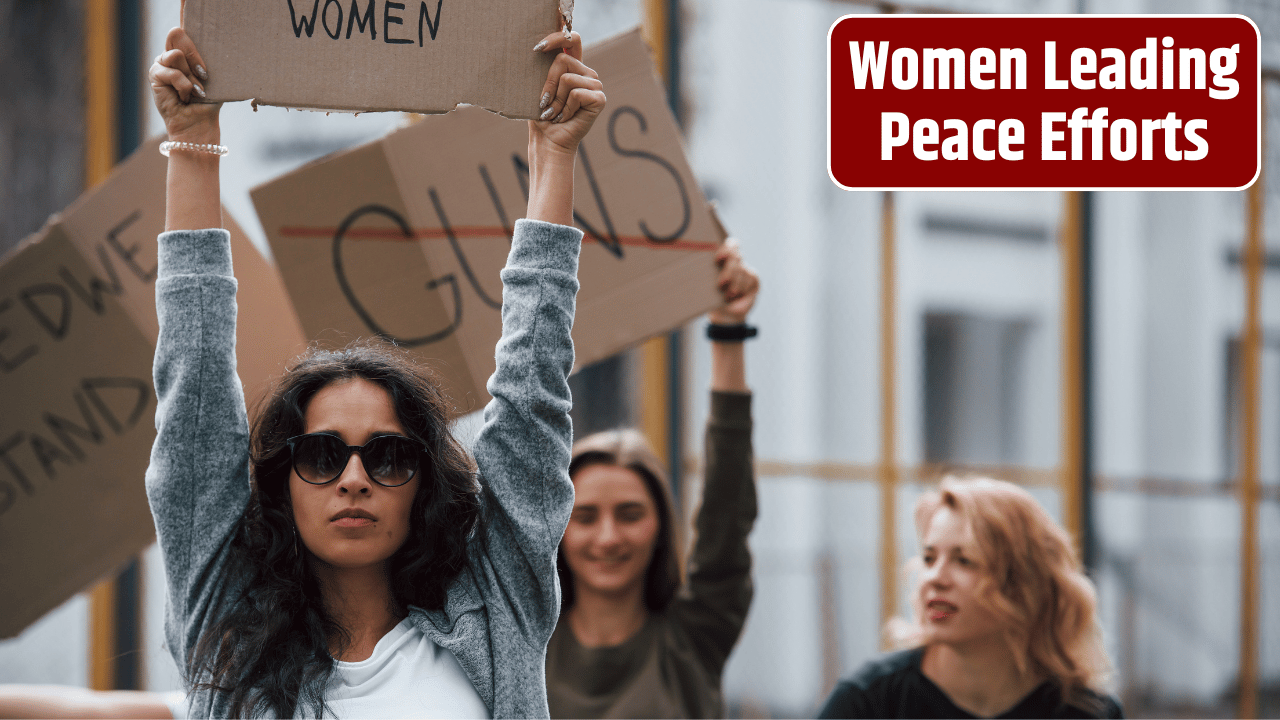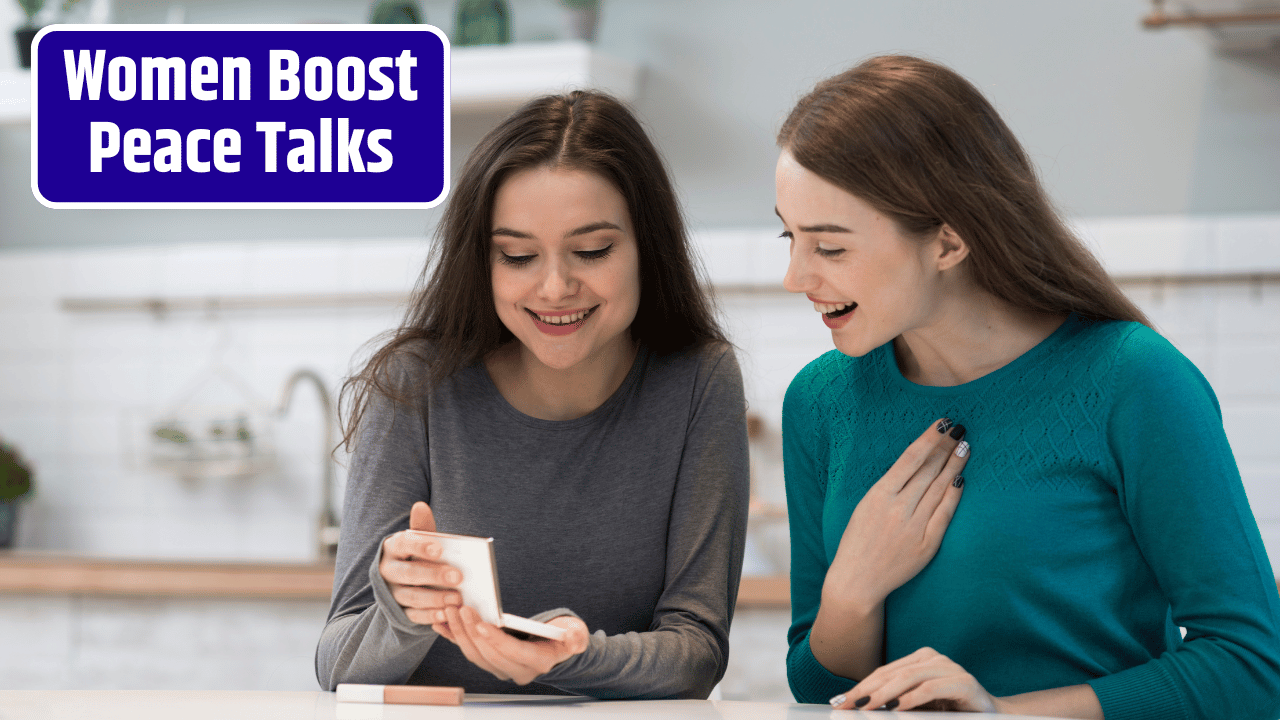Picture a war-torn village. Smoke curls above cracked rooftops, children hide behind crates, and grown men argue over ceasefires in hotel ballrooms lit with chandeliers. Now, zoom in. In a quieter corner, far from the press cameras, a group of women are circling up—some in faded saris, others in hijabs, headscarves, or jeans. No titles. No podiums. Just fierce determination.
This is the side of peacebuilding that doesn’t make the headlines.
The truth? While international media dotes on presidents and generals signing treaties over wine glasses, women have been leading the real peace talks—often barefoot, unpaid, and uncredited—for generations.
Let’s flip the script.
Table of Contents
They’ve Been There All Along
We act like women in conflict resolution is some modern trend—like it all started when Hollywood discovered Malala. Not quite.
Way before Twitter threads and TED Talks, women were resolving conflicts at kitchen tables, under mango trees, and in refugee camps. In Liberia, it was a group of women in white t-shirts—market vendors, mothers, students—who helped bring an end to a 14-year civil war. They staged sit-ins. Blocked exits. Refused to move until someone listened.
That movement helped elect Ellen Johnson Sirleaf—the first female head of state in Africa. But here’s the thing: even after she won the Nobel Peace Prize, most people couldn’t name Leymah Gbowee, the woman who actually led the movement.
Same story, different war.
The Silent Architects of Peace
Women aren’t just good at conflict resolution because they’re “nurturing” or “empathic.” That’s lazy stereotyping. The real edge? Access.
When men are on the frontlines, women are behind the scenes—talking across enemy lines at food markets, exchanging information through school pickup routes, sheltering displaced families from both sides. They know things. Who’s hurting. Who’s hiding. Who’s lying.
And unlike top-down, ego-driven diplomacy, women tend to focus on community repair—food, water, education, long-term safety. They talk solutions, not slogans.
Take Northern Ireland during The Troubles. While politicians traded barbs in Parliament, women across religious lines formed peace groups like the Women’s Coalition. Their participation in the Good Friday Agreement changed the DNA of the deal—putting education and reconciliation right next to disarmament.
No Instagram. No sponsorship deals. Just grit.
Still Locked Out
Now here’s the maddening part.
According to the UN, women make up less than 10% of negotiators in peace processes worldwide. Less than 3% of mediators. And when peace deals do include women? The agreements are 35% more likely to last at least 15 years.
Let that sink in.
We’ve got the data, the case studies, and the lived reality. But in most boardrooms and backchannels, women are still tokenized or left out altogether. Sometimes they’re invited to take notes… but not to speak.
And yet—despite all this—women keep showing up. Not for clout, but because the cost of staying silent is too damn high.
Peace Doesn’t Wear a Suit
There’s a kind of power in the way women negotiate. It’s not all handshakes and press conferences. Sometimes it’s just a woman walking miles through rubble to convince a warlord to release her son. Or a teacher hiding students from both militias. Or an old grandmother who, in one unforgettable case in Sierra Leone, shouted a ceasefire into being using nothing but a cooking spoon and a Bible.
This isn’t performative politics. It’s personal.
And maybe that’s why it works. Because peace, at its core, isn’t about treaties or televised speeches—it’s about survival. About stitching broken communities back together, piece by piece.
And guess who’s been holding the needle all along?
The Quiet Revolution Is Loud Enough Now
The next time you hear about a fragile peace deal or a major negotiation, ask yourself: Who’s in the room? Who’s missing?
Because the untold story of peace isn’t about absent violence—it’s about who gets to define the future after the bullets stop flying.
If we’re serious about lasting peace—real peace—we need to stop romanticizing it and start recognizing who’s already been doing the work.
Spoiler alert: she probably isn’t wearing a suit.
Quick Look: Numbers That Speak Louder
| Metric | Stat |
|---|---|
| Women in peace negotiations | <10% |
| Women as lead peace mediators | ~3% |
| Peace deals with women’s involvement | 35% more likely to last 15+ years |
| Women-led peace movements recorded | 40+ across 30 countries |
FAQs
Why are women so underrepresented in peace processes?
Because the systems that run international diplomacy were built by and for men. War rooms and peace tables alike have long excluded women, often dismissing them as “non-technical” or “emotional.”
Is there any country doing this right?
Yes. Countries like Rwanda and Sweden have made strong efforts to include women at every level of policymaking—including in peace and security. Rwanda’s parliament is over 60% female.
What’s the UN doing about this?
In 2000, the UN adopted Resolution 1325, urging the inclusion of women in peace and security processes. Progress since then? Mixed at best. The will exists, but follow-through remains patchy.
Are women actually more effective negotiators?
Effectiveness isn’t about gender—it’s about approach. Women tend to prioritize long-term community welfare, which statistically results in more durable peace.
How can I support female peacebuilders?
Support grassroots organizations. Donate, share their work, elevate their voices. You can also hold governments accountable for including women in official negotiations.














